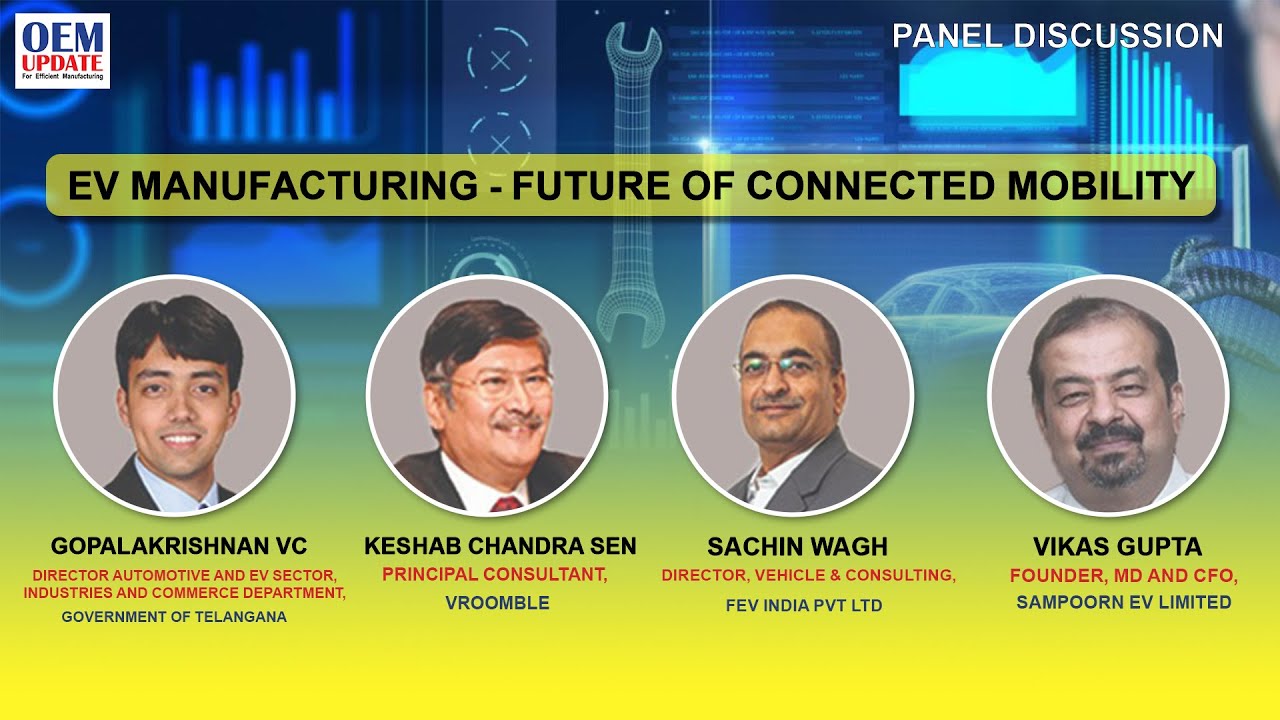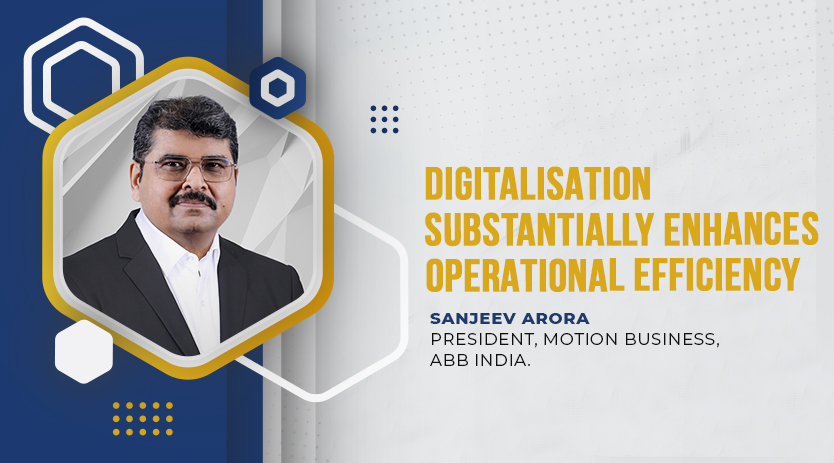IoT is changing manufacturing
June 12, 2018 10:40 am
Vivekanand Chikale,
Head Applications, Factory Automation, FANUC India
Applying this (IoT) to the manufacturing industry, there can be machines talking to machines, which can change completely the way manufacturing is being done today.
Gone is the age of Internet of People which connected people, and now is the age of Internet of Things or IoT –where anything can be connected, at anyplace and at any point of time. As broad band Internet becoming easily available with larger bandwidths at lower cost, smart devices like phones, watches, body sensors becoming cheaper and being available to everybody is creating the right platform for IoT. The concept of IoT, is going to affect or change completely the way we are living, and the way we are working.
What is IoT?
Why is connecting things going to be important, if for example my alarm clock and water heater are connected, the water heater can start heating water after the alarm clock wakes one up. The body sensor can monitor body status of patients and intimate to the family doctor about any anomalies immediately. So there are unlimited possibilities when connectivity between things is available.
Applying this to the manufacturing industry, there can be machines talking to machines, which can change completely the way manufacturing is being done today. This will enable equipment monitoring, tack-time and bottleneck operation monitoring, production and process monitoring, analysis of data, optimising the process and operation, diagnostics and troubleshooting, predictive and preventive maintenance, improvement of equipment efficiency, data sanctity, meeting customer demands, inventory management. So as a whole, this is going to revolutionise the manufacturing sector all together. This in true sense is going to be the fourth industrial revolution – Industry 4.0.
FANUC, since 1956 is developing CNC and Servo Systems and is one of the world leaders in CNC, Robots and Robomachines, and is an integral part of any manufacturing industry the world over now. FANUC with its vast experience in the manufacturing domain, has reached its production volumes to over 40,000 CNCs, 200,000 servo motors, 5,000 Robots, and 5,000 Robomachines per month.
With its vision for smart manufacturing, FANUC had come up with the solution for interconnected machines, way back in the 2004.
FANUC developed FOCAS – Fanuc Open CNC API Specification in the year 2004. FOCAS was developed as libraries/ drivers which provide communication access to CNC data via Ethernet. It gives access to all the data of the CNC like axis position, program data, operation history, production data like parts count, cycle time.
However FOCAS faced some challenges, RAW data was available, and it required programming expertise to fetch data from CNC. Development times, considering fetching of data from battery of machine was even more complex.
Citing this FANUC came up with a complete solution, called as MT-LINKi– data collection software for machine tools. MT-LINKi makes it possible to connect to the machine tool over Ethernet, collect data from the machine tool, monitor live status of machine tools, and also makes it possible to use collected data on host system like ERP software easily.
MT-LINKi collects the data from the CNC at an interval of 0.5 second. The data is real time and is sufficient to establish patterns, for various production cycles, and to derive useful information like servo load, spindle loads, tool life’s, parts count and use it for analytical purpose.
The collected data is stored in the Mongo Database, which comes bundled up with the MT-LINKi software, hence avoiding additional investments for the data base licensing.
MT-LINKi provides a useful interface for collecting all the data from the CNC like:
• CNC status signals (cycle running, cycle stopped, emergency state, alarm sate).
• CNC mode information (auto, edit, MDI).
• Spindle speeds.
• Feedrates.
• Production count.
Predictive maintenance data like:
• Insulation Resistance of the servo or spindle motors.
• Rotation speeds of FANS, battery low warnings.
MT-LINKi, supports not only FANUC CNC, but also third-party controllers using the OPC UA protocol. This makes it even more flexible for shop floors having other than FANUC controllers. Soon, MT-LINKi is expected to be updated for communicating with FANUC robots as well.
MT-LINKi works in the same environment as the machines i.e. in the factory environment. The data is being collected continuously at 0.5 second. Hence it becomes necessary that this MT-LINKi software should have a reliable hardware platform. So FANUC has come up with a new hardware called as Field Base 0.
Field Base 0 is basically an industrial PC with high reliability and toughness under FA environment. Features include:
• Fan-less, improved resistance against dust and coolant mist
• Memory with ECC, improved resistance against data error
• Wide temperature range, Shock/Vibration resistive
• Components bearable FA environment
• Data not lost and it is safe (server cable disconnect).
Hence MT-LINKi along with Field Base 0 helps in collecting data of CNC/Robot/PLC and collaborating with upper server, contributes to enhancement of IoT of the equipment.
FANUCs Vision for IoT: FIELD (FANUC Intelligent Edge Link & Drive system)
This is a platform which enables FANUC and MTB to create new value services using IoT technology. FIELD consists of hardware and software that allows multiple external computing devices to be added to the plant network in a highly secure manner. The software suite is composed of both open source and proprietary licensable products (from Cisco and Preferred Network). Once the FIELD software is loaded and configured, the machine data from all the automation equipment including CNC machines and robots can then be accessible to application developers through an open Application Programming Interface (API). The easy access to machine data significantly reduces the effort for a third-party to develop applications to run on the FIELD system, providing a variety of monitoring, analytic and real-time functions. The FIELD system is based on Edge Computing where a large amount of data is processed within the manufacturing site, minimising the volume and cost of sharing data, while also providing a secure connection to the Cloud for suitable applications. The data that is on the FIELD system from various machines can also be used for collaboration among equipment, performance optimisation, improved traceability and quality control.
The convergence of IoT and industrial manufacturing has begun. Connectivity to equipment on the factory floor is growing at a rapid pace. This connectivity opens the door to new sources of data enabling applications that can leverage this data to deliver real business value.
Authored by:
Vivekanand Chikale,
Head Applications, Factory Automation
FANUC India
Cookie Consent
We use cookies to personalize your experience. By continuing to visit this website you agree to our Terms & Conditions, Privacy Policy and Cookie Policy.


















 English
English Hindi
Hindi